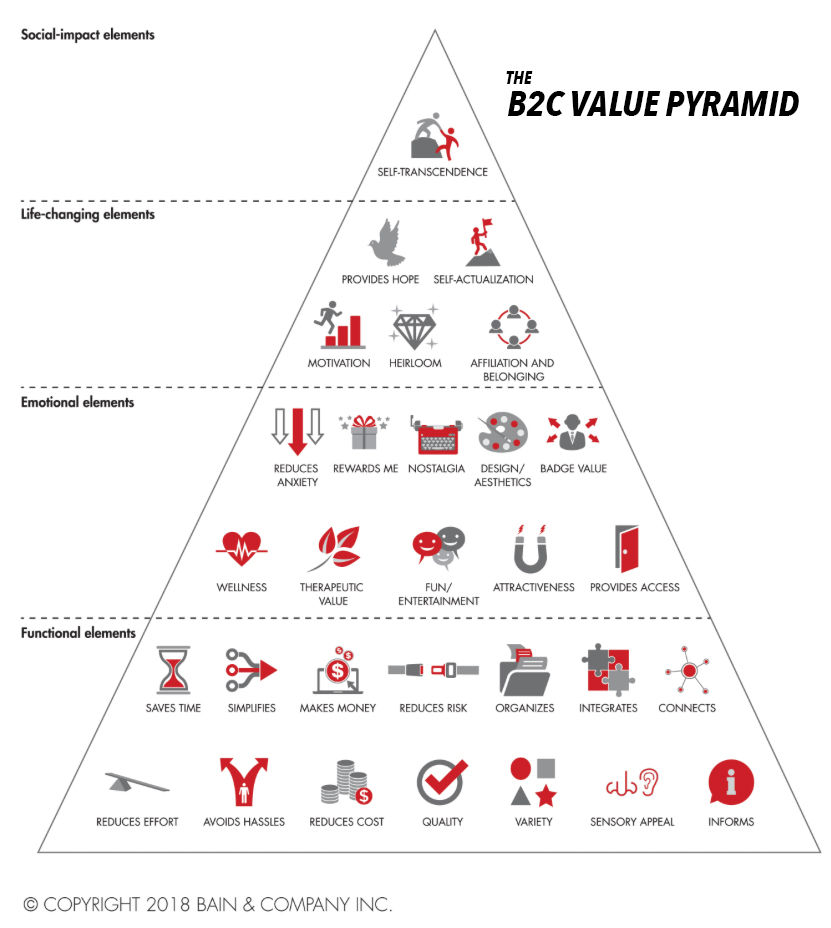How much is an avocado?
- Marian Chrvala
- Jul 14, 2020
- 3 min read
Updated: Dec 19, 2022
The answer is, it depends.
It depends on the season, the stock levels, the shop and whether it's ripe or not.
The most important factor, though, is the context in which you are buying or consuming the avocado.
Consider this.
Buy it at TESCO and it might be as little as two euro.
Mash it up, add pepper, olive oil and serve it with egg on sourdough toast and it can be worth 7 times that amount to some people.
And that’s the point.
THE CONTEXT.
Value is contextual and is in the eye of the beholder.
"Price is what you pay; value is what you get.”-Warren Buffett
If you want to get better at creating and communicating your value, you need to know who your beholder is and what she cares about.
There’s only one way to get people to buy something.
Create value for them.
How?
Forget features.
Forget benefits.
Value lies in transformation.
Picture this.
Your customer has a problem.
She is at the top of a chasm on one cliff looking at another cliff across the way.
She wants to get on the other side.
She has a lot of questions.
She is facing a lot of obstacles.
To help her to get across the chasm, you must build a bridge for her with your product.

It’s one thing to recognize value is rooted in transformation, but another to deliver it.
If you struggle to identify how you transform your audience, here’s a simple way to think about it.
"Transformation happens when you add something (new skills, knowledge, habit, etc.) or subtract something (bad habits, people, problems, etc.) from someone’s life. If your creation doesn’t do either of those things, it probably isn’t valuable." - Josh Spector
Wondering what your customers want?
Here are two pyramids for you.
The elements of value at the base are more common and you know them very well.
It is the higher-level, subjective elements that you probably fail to pay enough attention to.


In his by now legendary memo, Slack’s founder Stewart Butterfield highlights how selling a bigger idea beyond their group chat product could help them define a new market, instead of battling it out with dozens of incumbents.
“What we are selling is not the software product because there are just not many buyers for this software product. That’s why what we’re selling is organizational transformation. The software just happens to be the part we’re able to build and ship.” -Slack
The full-service storage company Clutter doesn’t hard-sell its boring storage services.
It talks about delivering peace of mind.
Transformation.
Transformation.
Transformation.
Who do you want your customers to become?
Your job is to transport your customers from one state to another.
They start in the “before state.”
This describes where they were when they started to engage with our brand.
Help them move to the “after state,” which is what they can become with our help.

How you present your proposed value to your audience is as important as the value itself.
You can play with perception to establish value.
To demonstrate that, let’s talk about lobster.
Again, John Spector writes here:
As this infographic reveals, lobster is perceived as a high-end food these days, but it used to be the opposite.
For centuries lobster was primarily eaten by the poor, fed to prisoners, and even cheaper to buy than a can of baked beans.
That changed in the late 19th century — not because lobsters changed, but because the perception of them did.
Railway companies served lobster in dining cars and rebranded it as an exotic dish since it was now being served away from the shores where lobsters were found.
Because the perception of lobster changed, so too did the value consumers associated with it.
This led to overfishing which reduced supply and increased prices — further driving up the perceived value of lobsters until today when it’s viewed largely as high-end food.
Now that we have finished our lunch, let's order a bottle of wine, shall we?
In 2015, scientists confirmed what all but the most serious wine drinkers have long suspected.
That a bottle of wine tastes better if you think it costs more.
Yes.
Price labels influence our liking.
Researchers at the business school INSEAD and the University of Bonn asked 30 people to taste samples of three different wines.
Before each taste test, everyone was told how much each wine supposedly cost, either 3, 6 or 18 euros a bottle.
In reality, each of the three wines was identical and came from the same bottle.
Keep this in mind when pricing your products.
Just like with lobsters and wine, the value of your product can be highly influenced by people’s perception of it.
Make an extra effort to influence that perception to your benefit whenever possible.
Anyway.
I am just a guy noticing things.
That’s my rant, I hope it resonates.
PS. Like what you’re reading here? Well, you have three choices really.
1. Get more stories straight to your inbox. Subscribe in the page footer below.
3. When you are ready to level up, hire me.
Opmerkingen